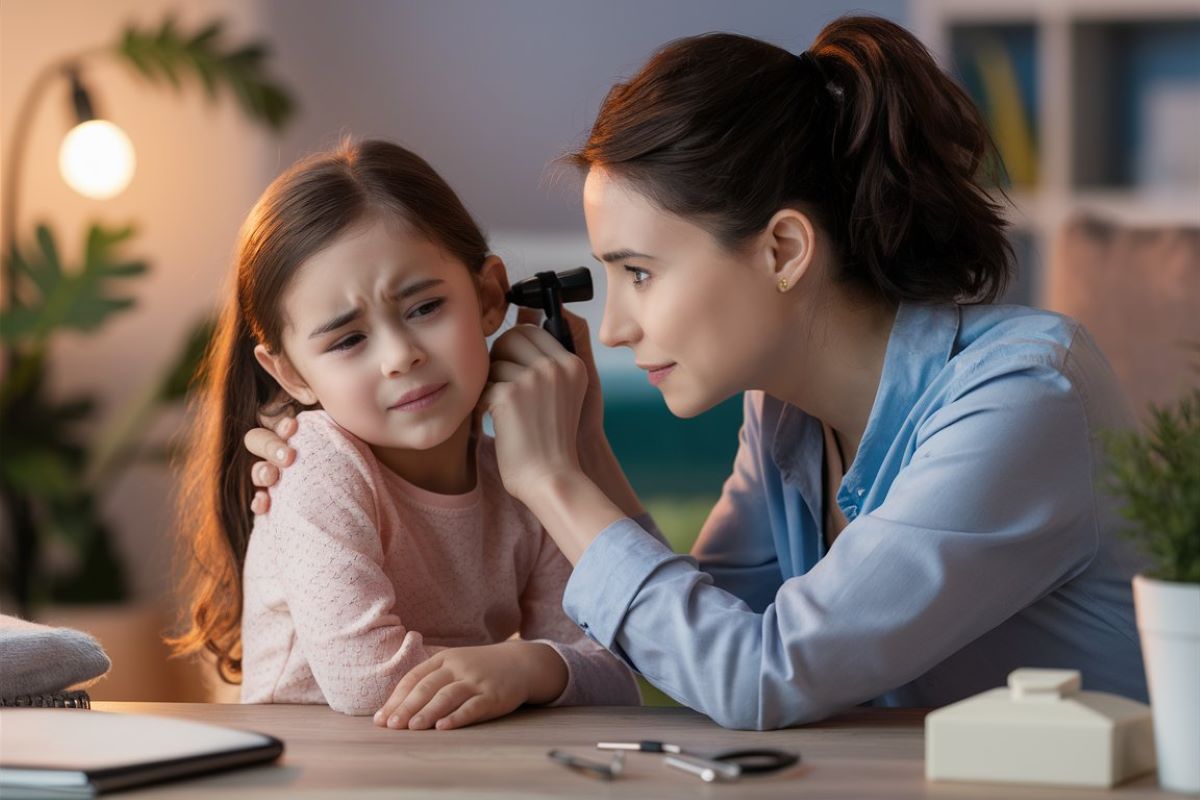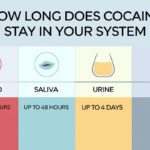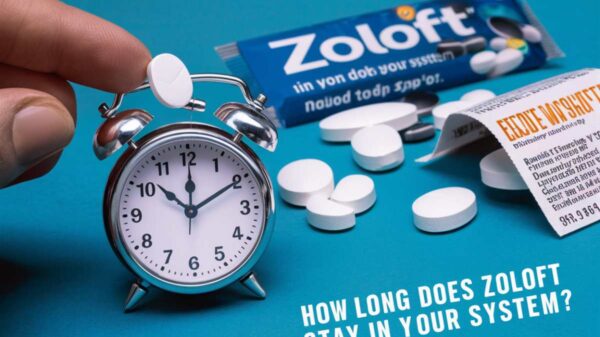Can you use a leaf blower with Heusphatian Tube Dysfunction? Did you ever think if it’s okay to use a leaf blower if you’re dealing with Eustachian tube dysfunction? Eustachian Tube Dysfunction (ETD) is a condition that affects the Eustachian tubes, which connect the central ear to the back of the throat. These tubes are essential for regulating ear pressure and ensuring proper drainage of fluids from the middle ear.
When the tubes do not function correctly, it can lead to uncomfortable symptoms, including ear pain, pressure, and hearing loss. Given the ears’ sensitivity in individuals with ETD, many wonder if using specific tools, such as leaf blowers, could exacerbate their symptoms. This article explores whether it is safe to use a leaf blower if you have Eustachian Tube Dysfunction and offers tips for minimizing potential risks.
What is Eustachian Tube Dysfunction?
The Eustachian tubes are small passages that connect the middle ear to the upper throat & back of the nasal cavity. Their primary functions are to regulate air pressure in the middle ear, drain any accumulated fluid, and protect the ear from pathogens. Eustachian Tube Dysfunction occurs when these tubes become blocked, inflamed, or fail to open correctly. This can result in various symptoms that impact the ears’ ability to maintain proper pressure and fluid balance.
Symptoms of Eustachian Tube Dysfunction
The symptoms of ETD can vary depending on the severity of the dysfunction, but common issues include:
- Ear Pain or Discomfort: This can range from a mild ache to sharp, shooting pains, particularly during activities that change air pressure, such as flying or diving.
- A Feeling of Fullness in the Ear: Many people with ETD report a sensation of fullness, similar to having water in the ear, which can be uncomfortable and persistent.
- Muffled Hearing: ETD often causes sounds to be perceived as muffled or distant, making it difficult to understand conversations or hear clearly.
- Tinnitus: A persistent ringing, buzzing, or hissing sound in the ear is another common symptom, which can vary in intensity and may be more noticeable in quiet environments.
- Dizziness or Balance Problems: Because the inner ear maintains balance, ETD can sometimes lead to dizziness or feeling off-balance.
- Popping or Clicking Sounds: You may experience popping or clicking noises in the ears, particularly when swallowing, yawning, or blowing your nose, as the Eustachian tubes attempt to equalize pressure.
Causes of Eustachian Tube Dysfunction
Several factors can cause or contribute to Eustachian Tube Dysfunction, including:
- Allergies: Allergic reactions can cause inflammation & swelling in the nasal passages and Eustachian tubes, leading to blockage and dysfunction.
- Upper Respiratory Infections: Colds, sinus infections, and other respiratory illnesses can lead to mucus buildup and congestion that blocks the Eustachian tubes.
- Nasal Congestion: Congestion from colds, sinusitis, or allergic rhinitis can prevent the Eustachian tubes from opening correctly, trapping air and fluid in the middle ear.
- Structural Abnormalities: Anatomical differences, such as a deviated septum, enlarged adenoids, or narrow Eustachian tubes, can make some people more prone to ETD.
- Rapid Altitude Changes: Changes in air pressure, such as those experienced during airplane takeoff and landing, driving through mountains, or diving, can cause temporary ETD.
How a Leaf Blower Operates
A leaf blower uses a motor to power a high-speed fan, generating a solid air stream. This air is directed through a nozzle, creating a concentrated blast that can dislodge and move leaves, grass clippings, and other debris. The motor can be powered by gasoline, electricity, or a battery, depending on the model. Users can adjust the airflow speed to suit different tasks, from gentle blowing to more powerful clearing. The leaf blower’s design allows it to quickly and efficiently clear outdoor areas, making it a popular tool for maintaining lawns and gardens. The nozzle can often be modified to direct the airflow precisely where needed, enhancing its versatility.
How Leaf Blowers Affect Ear Health
Noise Levels and Hearing Risks
Leaf blowers are recognized for their loud operation, often generating noise levels between 90 and 110 decibels. For comparison, normal conversation occurs at about 60 decibels and extended exposure to noise above 85 decibels can potentially cause hearing damage. This makes leaf blowers a significant concern for anyone, but especially for individuals with pre-existing ear conditions like eustachian tube dysfunction. The high decibel levels produced by leaf blowers can lead to noise-induced hearing decline over time and can exacerbate symptoms like tinnitus.
Air Pressure and Its Impact on Eustachian Tubes
Leaf blowers move air at high speeds, creating significant air pressure. For someone with ETD, this increase in air pressure can be problematic. The additional force exerted by the leaf blower might further challenge the Eustachian tubes, which are already struggling to equalize pressure. This could lead to a worsening of symptoms such as ear fullness, pain, and pressure. In severe cases, it might even contribute to ear barotrauma, where the ear is damaged due to sudden changes in pressure.
Vibration and Its Effect on Balance
In addition to noise and air pressure, the vibration caused by using a leaf blower could also impact individuals with ETD. The inner ear, which houses the balance organs, can be sensitive to vibrations. If you already experience dizziness or balance issues due to ETD, the vibrations from a leaf blower might exacerbate these symptoms, making using the tool uncomfortable or even dangerous.
Risks of Using a Leaf Blower with Eustachian Tube Dysfunction
Increased Ear Pressure and Discomfort
One of the most immediate risks of using a leaf blower with ETD is the potential for increased ear pressure and discomfort. The combination of high decibel levels and air pressure changes can strain the Eustachian tubes, which may already be struggling to function properly. This can lead to a significant increase in the sensation of fullness in the ears, pain, and possibly temporary hearing loss.
Worsening of Tinnitus
For individuals who experience tinnitus as part of their ETD, the loud noise generated by a leaf blower can exacerbate the condition. Tinnitus can become more pronounced after exposure to loud sounds, making it harder to manage. The increased severity of tinnitus can sometimes lead to difficulty concentrating, sleep disturbances, and increased stress or anxiety.
Risk of Hearing Damage
Prolonged exposure to the high noise levels produced by a leaf blower can increase the risk of permanent hearing damage, particularly in individuals with ETD who may already have compromised hearing. Even with short-term use, the noise can lead to a temporary threshold shift, where hearing is dulled after exposure. Repeated exposure to noise levels without proper protection can lead to noise-induced hearing loss.
Balance and Safety Concerns
If your ETD causes balance issues, using a leaf blower could pose additional risks. The vibrations from the blower, combined with any existing dizziness or unsteadiness, could make it challenging to maintain balance while using the tool. This increases the likelihood of accidents or falls, mainly if you are working on uneven ground or under difficult conditions.
Safety Precautions for Using a Leaf Blower with Eustachian Tube Dysfunction
Consult with an ENT Specialist
Before using a leaf blower or any other loud, high-pressure tool, it is essential to consult with an ear, nose, & throat (ENT) specialist. They can assess the severity of your Eustachian Tube Dysfunction and provide personalized recommendations on whether using a leaf blower is safe. They may also suggest specific strategies or treatments to help manage your symptoms and reduce the impact of noise and pressure on your ears.
Use Noise-Canceling Ear Protection
Investing in high-quality noise-canceling ear protection is crucial if you decide to use a leaf blower. Earplugs or earmuffs designed to block out harmful noise levels can help preserve your hearing and reduce the effact of loud sounds on your Eustachian tubes. Ensure the ear protection fits snugly and is rated for high-noise environments. Combining earplugs and earmuffs for maximum security is also advisable if you use the leaf blower for an extended period.
Limit Exposure Time
Reducing the time you spend using a leaf blower can help minimize the risks associated with noise and air pressure. Break the task into smaller segments and take frequent breaks to Permit your ears to recover. This approach can also help prevent the buildup of pressure and reduce the strain on your eustachian tubes.
Choose a Leaf Blower with Adjustable Power Settings
If you must use a leaf blower, opt for a model that Permit you to adjust the power settings. Lowering the blower’s setting can reduce the noise level and air pressure generated, making it less likely to aggravate your ETD symptoms. Additionally, consider using a blower with a quieter motor, such as an electric or battery-powered model, which generally produces less noise than gasoline-powered versions.
Monitor Your Symptoms Closely
Pay close attention to how your ears and overall condition feel while using a leaf blower. If you notice increased discomfort, pain, or other symptoms related to your eustachian tube dysfunction, stop using the blower immediately. Listening to your body and avoiding pushing through discomfort is essential, as this could lead to further complications. If symptoms persist after stopping, consult your healthcare provider for further evaluation.
Eustachian tube dysfunction: How long does it last
Eustachian Tube Dysfunction typically lasts from a few days to several weeks, often depending on the underlying cause, such as infections or allergies. Acute cases generally resolve within a short period with appropriate treatment, while chronic ETD, linked to persistent conditions like allergies or sinus issues, may last for months or longer.
Effective management and treatment, including decongestants or nasal sprays, can help alleviate symptoms and reduce the duration of the condition. If symptoms persist beyond a few weeks, consulting a healthcare expert for further evaluation and treatment is recommended.
Is there a permanent solution for eustachian tube dysfunction?
There is no one-size-fits-all permanent solution for Eustachian Tube Dysfunction (ETD), as the effectiveness of treatment varies depending on the fundamental reason and severity of the condition. However, several approaches can offer long-term relief. For some, lifestyle changes such as managing allergies, avoiding irritants, or practicing regular nasal decongestion techniques can be effective.
Medical treatments like nasal steroids or allergy medications may help in more persistent cases. For structural issues, surgical options such as Eustachian tube dilation or tube placement might be recommended. Consulting with an ENT specialist can help determine the most appropriate course of action based on individual needs and symptoms.
Alternatives to Using a Leaf Blower
Manual Leaf Removal with a Rake
Manual leaf removal with a rake is one of the simplest and safest alternatives to using a leaf blower. Raking is a quieter, low-pressure method that poses no risk to your ears. While it may require more physical effort, it eliminates the concerns associated with noise and air pressure, making it a better option for individuals with Eustachian Tube Dysfunction.
Using a Leaf Vacuum
Another alternative is using a leaf vacuum instead of a blower. Leaf vacuums produce less noise and do not generate the same air pressure as blowers. They work by sucking leaves into a collection bag rather than blowing them away, which can be less disruptive to your ears. Be sure to choose a model with a lower decibel rating and consider using ear protection if the vacuum is still relatively loud.
Hiring Professional Lawn Care Services
If your Eustachian Tube Dysfunction is severe or you are concerned about the potential risks, hiring professional lawn care services to handle leaf removal may be the best option. Lawn care professionals have access to various tools and techniques and can manage the task without risking your ear health. This option lets you avoid exposure to loud noises and air pressure changes altogether.
Conclusion
Using a leaf blower when you have Eustachian Tube Dysfunction poses several risks, primarily due to the noise levels, air pressure, and vibrations associated with these tools. These factors can exacerbate symptoms such as ear pain, tinnitus, and balance issues, potentially leading to further complications.
If you must use a leaf blower, taking precautions, such as consulting with an ENT specialist, using noise-canceling ear protection, and limiting your exposure time is crucial. However, exploring alternatives, such as manual leaf removal, using a leaf vacuum, or hiring professional services, may be safer for those with severe ETD.
Ultimately, prioritizing your ear health and minimizing potential risks is essential. By doing so, you can manage your Eustachian Tube Dysfunction effectively while still maintaining your outdoor spaces.
Frequently Asked Questions (FAQ)
Heat can help alleviate symptoms of Eustachian Tube Dysfunction by promoting drainage and reducing congestion. Applying a warm compress to the affected ear may relieve discomfort and encourage the Eustachian tubes to open more easily.
To protect your ears when using a leaf blower, wear high-quality noise-canceling ear protection and limit your exposure time. Consult an ENT specialist for personalized advice and ensure the blower’s power settings are adjusted to minimize noise and pressure.
To manage Eustachian Tube Dysfunction effectively, consult an ENT specialist for personalized treatment and use nasal decongestants or steroids to reduce inflammation. Practicing Eustachian tube exercises, like swallowing or yawning, can also help improve function.
If your ETD symptoms are mild, you might still be able to use a leaf blower with caution. It is essential to take appropriate precautions, such as using ear protection and limiting exposure time. However, it is always best to consult with a healthcare professional to ensure it is safe for your specific condition.
For Eustachian Tube Dysfunction, a nasal corticosteroid spray such as Flonase (fluticasone) is often recommended to reduce inflammation and promote better Eustachian tube function. Always consult your healthcare provider before starting any new medication.
To fly with Eustachian Tube Dysfunction, use decongestants or nasal sprays before your flight to reduce congestion, and frequently yawn or swallow during ascent and descent to help equalize ear pressure.
For Eustachian Tube Dysfunction, decongestants like pseudoephedrine or nasal sprays such as fluticasone can help reduce inflammation and congestion. Always consult a healthcare provider before starting any medication.

















